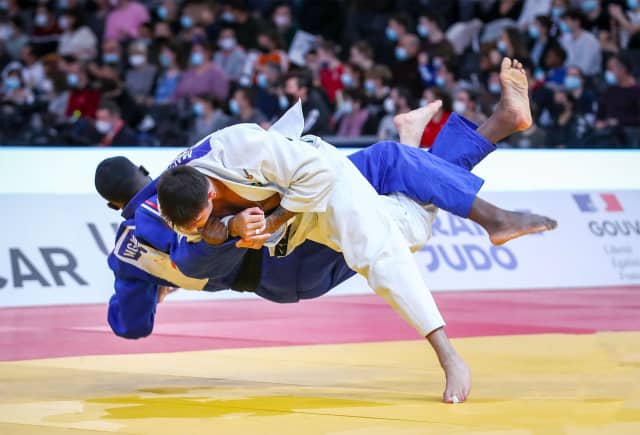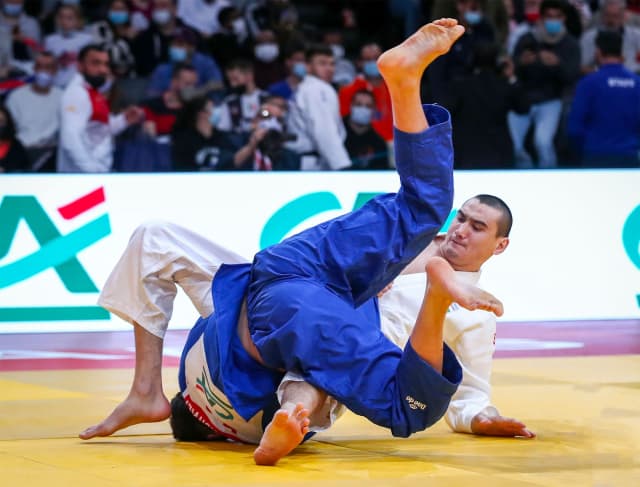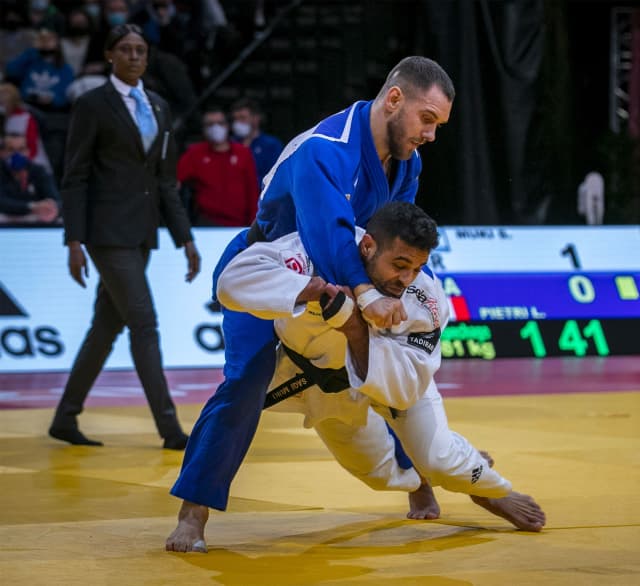Completing a technical analysis of a competition like the Paris Grand Slam is not easy because there are so many options. Is it necessary to have an overview when seven weight categories competed in a prolific day? If it is an analysis in terms of beautiful movements it would be, therefore, difficult to highlight any particular element. Or should we choose to favour one element or judoka over the others? All this remains both very concrete but also very subjective. This is why we usually ask different experts because everyone, by definition, has his or her own vision of the event.
Overall, as was already the case in Portugal a week ago, I am amazed again at how quickly the athletes on the circuit have integrated the changes in the refereeing rules. If the adaptation is still in progress, it is done in a completely transparent and seamless manner. It can be said that the competitors and their coaches have done their homework because the job has been done and done well. One of the major changes made recently concerns the landing at a 90° angle or more towards the back, for the action to be counted for scoring purposes. This makes the analysis simpler and clearer because ultimately one can focus on the impact and nothing else.
Obviously one of the changes most commented on was the prohibition of reverse seoi-nage. This movement had developed in recent years via the impetus of a few athletes who had made it their favourite movement but there was also a certain danger for uke, hence the ban. One of the specialists of this reverse seoi was the 2013 world champion, Loïc Pietri. I saw him today, again with pleasure on the tatami. He finished in seventh place, which does not yet reflect his best level, but we can say that he won his fights without using this technique, which would today have been unauthorised. He has adapted and no doubt has to do so again, but for now he has moved on and found new opportunities, particularly with ko-uchi-gari.
The control of the judogi has also evolved and of course as in each phase of change, a period of adaptation is necessary. Beyond all the logical debates, I enjoyed watching a competition during which the judogi once again became a fair tool between athletes, a tool which does not come undone permanently and one which allows the fabric to be grasped to make judo and to play with judo. Our sport is one of the only activities in which our own equipment, our judogi, does not strictly speaking serve us but our opponent. In summary, during a match or a randori we offer our opponent/partner the tools to project ourselves. It is because he or she does the same that judo is possible. There can be no discussion about judogi. It must offer everyone the same opportunities. That's the feeling I had over the weekend.
Talking about adaptation, the mishap that Nikoloz Sherazadishvili (ESP) suffered is very significant for an athlete in full reflection and evolution mode. As a double world champion, we can easily say that he is one of the best athletes of the moment, but that was at -90kg. Today in the -100kg category things are different. He has to rework his basics and it's not easy. During his years of reign, he was very often the tallest, imposing his height and his ample movements. Today he found himself in the first round, facing a competitor taller than him and with a totally unorthodox position, against which he did not even have time to put in place a tactic. Rolled up twice in a row, a few seconds apart, he looked amazed to lose so quickly. Nikoloz is no less strong today, he simply has to relearn how to fight in different conditions, against opponents who already have several seasons of experience at -100kg. We will see the Spanish champion again, certainly at a better level than he offered in the first two events of the season. It will take some time, which is difficult to estimate. All the work will consist of keeping the confidence in him and accepting to relearn how to fall, to find the way to the podium again.
For Sagi Muki, the 2019 world champion in Tokyo, it was not a question of changing category, but of returning to competition. It was a real pleasure to see him again, probably not at his best, but with the desire to test himself. He was there to win, that's obvious, because that's a hallmark of great champions. He did not succeed, failing at the foot of the podium after a last match against the Belgian Sami Chouchi, but I saw him attempt risky attacks, get out of inextricable situations with the agility of a cat or even dominate Loïc Pietri with mastery. He still lacks physical condition and competitions to find his best level. He too will have to learn the lessons of Paris and adapt his training.
I like to follow the brilliant paths of the French women who, after the post-Olympic Games break, have lost none of their beautiful energy. Some have not yet returned to their level of a few months ago but that team is so strong. No wonder we found three French women in the finals on the second day of the tournament, after Amandine Buchard's tactical demonstration the day before. If there were sometimes in the past some small gaps on the tactical side, the work done in recent years by the French technical staff is working wonders. Athletes are not only technically ready with a wide range of movements, but they are also able to handle the pressure, which makes them true winning machines.
I could go on for hours talking about Barbara Matic who, after stumbling in the semi-finals, allowed no chance in the bronze medal match, performing precision work on the end of the sleeve. We actually find a lot of end-of-the-sleeve kumi-kata, sometimes too much. In Barbara's case it was excellently done, sometimes it blocking everything. A good grip, sleeve and collar, is not bad either and more pleasant to look at.
All this is to say that it was two days of adaptation at all levels, technical, tactical and organisational adaptation but isn't that the very essence of judo: the way of flexibility or adaptation? So let's adapt and keep enjoying the judo.




